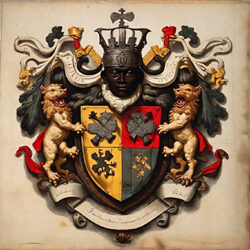
In the depths of historical American newspapers from the 1700s, lies a treasure trove of information about swarthy Europeans, their physical characteristics, and the intriguing narratives woven around their identities. Let’s embark on a journey through time and explore the fascinating revelations hidden within these yellowed pages.
Imagine flipping through the Pennsylvania Gazette or the American Weekly Mercury and stumbling upon descriptions of individuals with “swarthy complexion,” “black hair,” and distinctive accents. These descriptions, far from being mere observations, paint a vivid picture of the diverse European immigrants who journeyed to the New World centuries ago.
One striking term that emerges from these historical records is “black Irish.” Contrary to modern interpretations, this term was used to describe individuals with specific physical features rather than denoting race. The newspapers meticulously noted characteristics like dark complexion, black hair, and Irish accents, providing a glimpse into the rich tapestry of Irish immigrants in early America.
Delving deeper, we encounter a kaleidoscope of skin complexions among Irish immigrants, challenging stereotypes and showcasing the diversity within the Irish community. From fair complexions to sandy tones, these descriptions shatter monolithic perceptions and highlight the multifaceted nature of immigrant populations.
The narrative extends beyond Ireland to include “black Scots,” indentured servants from Scotland described with dark complexions, black hair, and distinctive Scottish accents. These descriptions not only reflect physical attributes but also hint at the cultural heritage and backgrounds of these individuals, adding layers of complexity to their stories.
Moreover, the historical names bestowed upon these individuals, such as “black” or “swarthy,” were descriptive rather than racially charged. They reflected physical characteristics that stood out and were used to distinguish individuals within their communities.
As we unravel these historical accounts, it becomes evident that European history is not a monolith but a mosaic of diverse experiences, skin tones, and cultural backgrounds. The newspapers serve as windows into a forgotten past, where swarthy Europeans were an integral part of the tapestry of early American society.
Beyond the surface descriptions, these historical records prompt us to question our preconceived notions and recognize the complexity of identity. They remind us that history is not static but a dynamic narrative shaped by diverse voices and experiences.
In conclusion, the exploration of swarthy Europeans in historical newspapers unveils a hidden history, challenging stereotypes and revealing the vibrant diversity within European immigrant communities. It urges us to look beyond labels and embrace the richness of human experiences across time and space.





